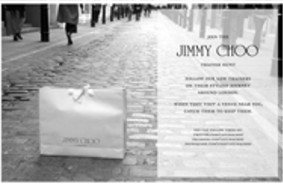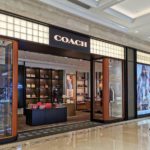Market analysis: Tools used by luxury brands
Three tools used by luxury brands for consumers to find information
– Their own website
– Their own pages on social networks
– Answering questions online
Luxury brands are using the internet less as a tool to advertise (few luxury brand pays Google ads), but rather to answer consumers’ questions accurately and to correct wrong statements. It is more about soft influence than traditional marketing.
Example of soft-influence digital marketing
In this case, Nespresso answers the consumer directly. Their call centers have changed into a call / click centers where customers can receive responses through multiple mediums of communication including mail/ phone / SNS online / email.
Companies can even go a step further and comment on images that are uploaded. With the recognition of images and the frequent upload of pictures from phone devices (smartphones), an increasing number of companies are using recognition software to find their logo, brands and sponsors.
Transparency has now become the rule. Initiatives in charity raise questions and companies answer in live.
In order to celebrate the launch of the first Jimmy Choo shoes collection, Jimmy Choo worked with a British agency from London to start a treasure hunt in London. With the growing popularity of the location-based App Foursquare on Android and IPhones, the shoes “turned on”, indicating to Foursquare’s followers where they were. The shoes were placed in locations that were relevant to the brand’s image – the luxury hotel Ritz, for example – to keep the marketing operation fun and interactive but also help Jimmy Choo’s shoes to be targeted towards the right audience. The first person to get there won the pair of shoes. This marketing technique is an example of click and enables companies to link the internet to real life. 4,000 people got involved in the treasure hunt in less than a 4-week time. The news about the treasure hunt was initially shared by so-called “influential” bloggers or opinion leaders before being picked up by press agencies – Reuters and Associated Press – and in publications such asVogue. The London-based luxury brand demonstrates that it is possible for a luxury brand to maintain its uniqueness even though they communicate with bloggers and specialized social media bloggers as well with Facebook and apps. Following an article in the English press, Jimmy Choo shoes sales rose by more than 25%!
Conclusion:
Utilizing the internet makes it possible for high-end brands to communicate effectively and quickly. Nevertheless, what type of customer service may a luxury and quality brand actually be able to provide online? For a luxury brand, client service is also a luxury and is typically carried directly in the brand’s own boutique. Fixing a watch or identifying the authenticity of a product via Twitter is impossible. Most luxury brands’ online streams, whether they are on Twitter or Facebook or others, are nothing more than simple R.S.S. – RDF Site Summary – feeds of its latest news. One technique used by some brands is to send information to help a web user find a solution to a specific issue. If a person tweets that they think their Hermes handbag is faked, for example, Hermes can tweet back the address of the closest Hermes shop.
Edited by Amy Wang from Daxue Market Analysis in China
Sources:
- Abrams Research
- Unity Marketing
- The Economist
Picture source: Google Image










![[Podcast] China paradigm #18: How to take western digital marketing success into China](../wp-content/uploads/2019/04/China-business-podcast-China-paradigm-18-150x150.jpg)
![[Podcast] China paradigm #17: How to best engage consumers in China](../wp-content/uploads/2019/03/China-Paradigm-Podcast-17-150x150.jpg)






